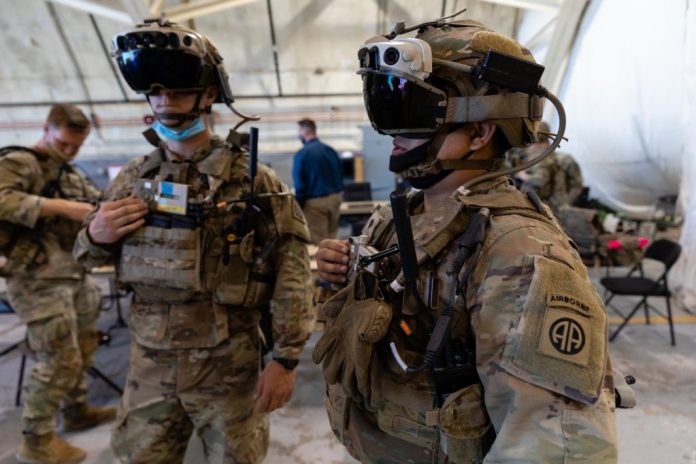In a week-long visit, Microsoft engineers were invited to a North Carolina military base to see the tech roadmap for HoloLens 2 and IVAS integration with the U.S. Army. Microsoft’s Deborah Bach this week published a blog detailing the visit. The partnership between Microsoft and the army is an extension of an initial deal agreed back in 2018. When the initial deal was signed in November 2018, Microsoft’s own employees criticized the agreement. There were concerns regarding how HoloLens would be used to train soldiers and eventually lead to deaths. Microsoft CEO, Satya Nadella stood firm against the protests and Microsoft has pressed on with the collaboration. Inviting Microsoft to see how the work is progressing provided some insight into how the military will use HoloLens 2 and IVAS. “Because Microsoft was a non-traditional defense contractor, we felt like for them to be able to experience what soldiers actually feel and what they go through would help with making some of their technical decisions,” says Mark Stephens, the Army’s deputy program manager on the project.
Improvements
IVAS will leverage location data from soldiers over a tactical range to provide visualizations of where other soldiers in a squadron are. This will be valuable in low-visibility situations such as in smoke, sandstorms, or jungle. Because of the advancements in augmented reality technology, HoloLens 2 can construct more realistic environments for solider to train in. Microsoft has also been developing training recommendations based on over 80,000 hours of feedback from soldiers. The company run the data through Power BI to visualize areas of improvement for military purposes. With the information, the HoloLens 2 team has been creating improvements to enhance the experience. It is worth noting both the Army and Microsoft insist HoloLens’ role is purely as a training tool. You can check out full details about the development of the project on Microsoft’s extensive blog post. Tip of the day: Did you know that Windows 10´s Task Manager lets you set CPU affinity to claw back some resources from running apps and give selected apps higher priority. Our tutorial shows how you can use this helpful feature.




